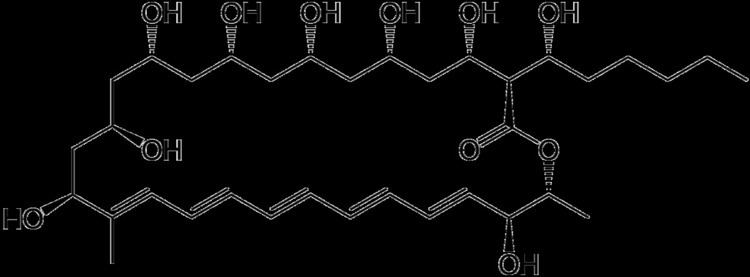 | ||
Filipin is a mixture of chemical compounds first isolated by chemists at the Upjohn company in 1955 from the mycelium and culture filtrates of a previously unknown actinomycete, Streptomyces filipinensis. It was discovered in a soil sample collected in the Philippine Islands, hence the name filipin. The isolate possessed potent antifungal activity. It was identified as a polyene macrolide based on its characteristic UV-Vis and IR spectra.
Contents
Functions
Although the polyene macrolide antibiotics exhibit potent antifungal activity, most are too toxic for therapeutic applications, with the exceptions of amphotericin B and nystatin A1. Unlike amphotericin B and nystatin A1 which form sterol-dependent ion channels, filipin is thought to be a simple membrane disrupter. Since filipin is highly fluorescent and binds specifically to cholesterol, it has found widespread use as a histochemical stain for cholesterol. This method of detecting cholesterol in cell membranes is used clinically in the study and diagnosis of Type C Niemann-Pick disease.
It is also used in cellular biology as an inhibitor of the raft/caveolae endocytosis pathway on mamallian cells (at concentrations around 3 µg/mL)
Types
Filipin is a mixture of four components - filipin I (4%), II (25%), III (53%), and IV (18%) - and should be referred to as the filipin complex.
The relative and absolute stereochemistry of filipin III was determined by 13C NMR acetonide analysis.
